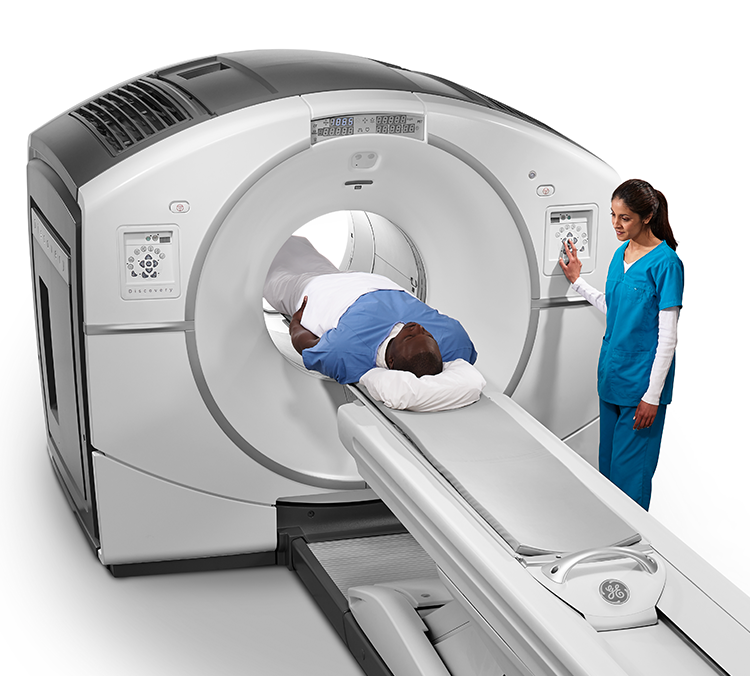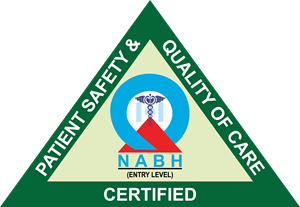Nuclear Medicine
What Is Nuclear Medicine ?
Nuclear medicine is a specialized branch of medical imaging that uses small amounts of radioactive materials, called radiopharmaceuticals or tracers, to diagnose and treat various diseases and conditions. Unlike other imaging modalities like X-rays, CT scans, or MRI, which primarily provide anatomical information, nuclear medicine focuses on functional information about the body's internal processes at the molecular and cellular level. Nuclear medicine procedures are conducted by nuclear medicine technologists under the supervision of nuclear medicine physicians. The field continues to advance, with ongoing research and development of new radiopharmaceuticals and imaging techniques to improve diagnostic and therapeutic capabilities.
- Radiopharmaceutical Administration: A radiopharmaceutical is a compound that consists of a small amount of a radioactive isotope (usually a gamma-emitting isotope) attached to a molecule that is biologically active. This radiopharmaceutical is introduced into the patient's body, typically through injection, ingestion, or inhalation.
- Distribution in the Body: The radiopharmaceutical travels through the bloodstream and accumulates in specific organs or tissues based on its chemical properties. Different radiopharmaceuticals have affinity for specific organs or functions.
- Gamma Camera Imaging: A gamma camera, also known as a scintillation camera, is used to detect the gamma rays emitted by the radiopharmaceutical. The camera captures images of the distribution of the radioactive material within the body.

What Is The Main Cause Of Nuclear Medicine ?
The main cause of nuclear medicine is the use of radioactive materials, known as radiopharmaceuticals or tracers, to diagnose and treat medical conditions. These radiopharmaceuticals emit gamma rays, which can be detected and used to create images that provide information about the function and activity of specific organs or tissues.
- Radiopharmaceutical Administration: A radiopharmaceutical is a compound that consists of a small amount of a radioactive isotope attached to a biologically active molecule. This radiopharmaceutical is administered to the patient, typically by injection, ingestion, or inhalation.
- Distribution in the Body: After administration, the radiopharmaceutical circulates through the bloodstream and accumulates in specific organs or tissues based on its chemical properties and the body's physiological processes.
- Gamma Ray Emission: The radioactive isotope within the radiopharmaceutical emits gamma rays, which are a form of electromagnetic radiation. These gamma rays are detected by a specialized camera called a gamma camera or a PET scanner.
- Image Acquisition and Reconstruction: The gamma camera or PET scanner captures images of the distribution of the radioactive material within the body. The data collected is processed by a computer to create detailed images that show the concentration and distribution of the radiopharmaceutical.
- Nuclear medicine is used for a wide range of purposes, including diagnosing diseases, evaluating organ function, staging and monitoring cancer, and providing targeted therapy for certain medical conditions.
What Is Treatment ?
Treatment nuclear medicine, also known as therapeutic nuclear medicine, involves the use of radioactive materials, known as radiopharmaceuticals, to deliver targeted radiation therapy for the treatment of specific medical conditions. Unlike diagnostic nuclear medicine, which primarily provides functional information about the body's processes, therapeutic nuclear medicine focuses on using the radioactive properties of certain isotopes to destroy or inhibit the growth of abnormal cells. Radioactive Iodine Therapy for Thyroid Conditions: Radioactive iodine (usually iodine-131) is used to treat thyroid disorders, including hyperthyroidism and certain types of thyroid cancer. The radioactive iodine is taken orally, and it is selectively absorbed by thyroid cells, where it emits radiation that destroys the overactive or cancerous cells. Radiopharmaceuticals for Bone Pain Relief: Radiopharmaceuticals like Strontium-89 and Samarium-153 are used to alleviate pain from bone metastases in patients with advanced cancer. These radiopharmaceuticals are injected into the bloodstream and accumulate in areas of bone affected by cancer, delivering targeted radiation therapy. Radioembolization for Liver Cancer: In cases of liver cancer or metastatic liver tumors, radioactive microspheres containing Yttrium-90 are delivered directly into the blood vessels feeding the tumor. This delivers high doses of radiation directly to the cancerous cells while sparing healthy liver tissue. Peptide Receptor Radionuclide Therapy (PRRT): PRRT is used for certain neuroendocrine tumors that express specific receptors. It involves the administration of a radiopharmaceutical that targets these receptors, delivering radiation therapy to the cancer cells. Lutetium-177 PSMA Therapy for Prostate Cancer: This emerging therapy is used for advanced prostate cancer that has spread to other parts of the body. It involves the use of Lutetium-177-labeled prostate-specific membrane antigen (PSMA) to target and destroy cancer cells. Radiosynovectomy for Joint Conditions: Radioactive substances are injected into a joint affected by conditions like rheumatoid arthritis. The radiation helps reduce inflammation and pain by targeting the inflamed synovial lining of the joint. Treatment nuclear medicine procedures are administered by specialized healthcare professionals, such as nuclear medicine physicians and technologists, who have expertise in handling radioactive materials. The choice of radiopharmaceutical and treatment approach is based on the specific medical condition, the patient's individual characteristics, and the desired therapeutic outcome. Strict safety measures are followed to ensure that the benefits of the treatment outweigh any potential risks associated with radiation exposure.
Clinical Services
Facilities
24 Hours Services



